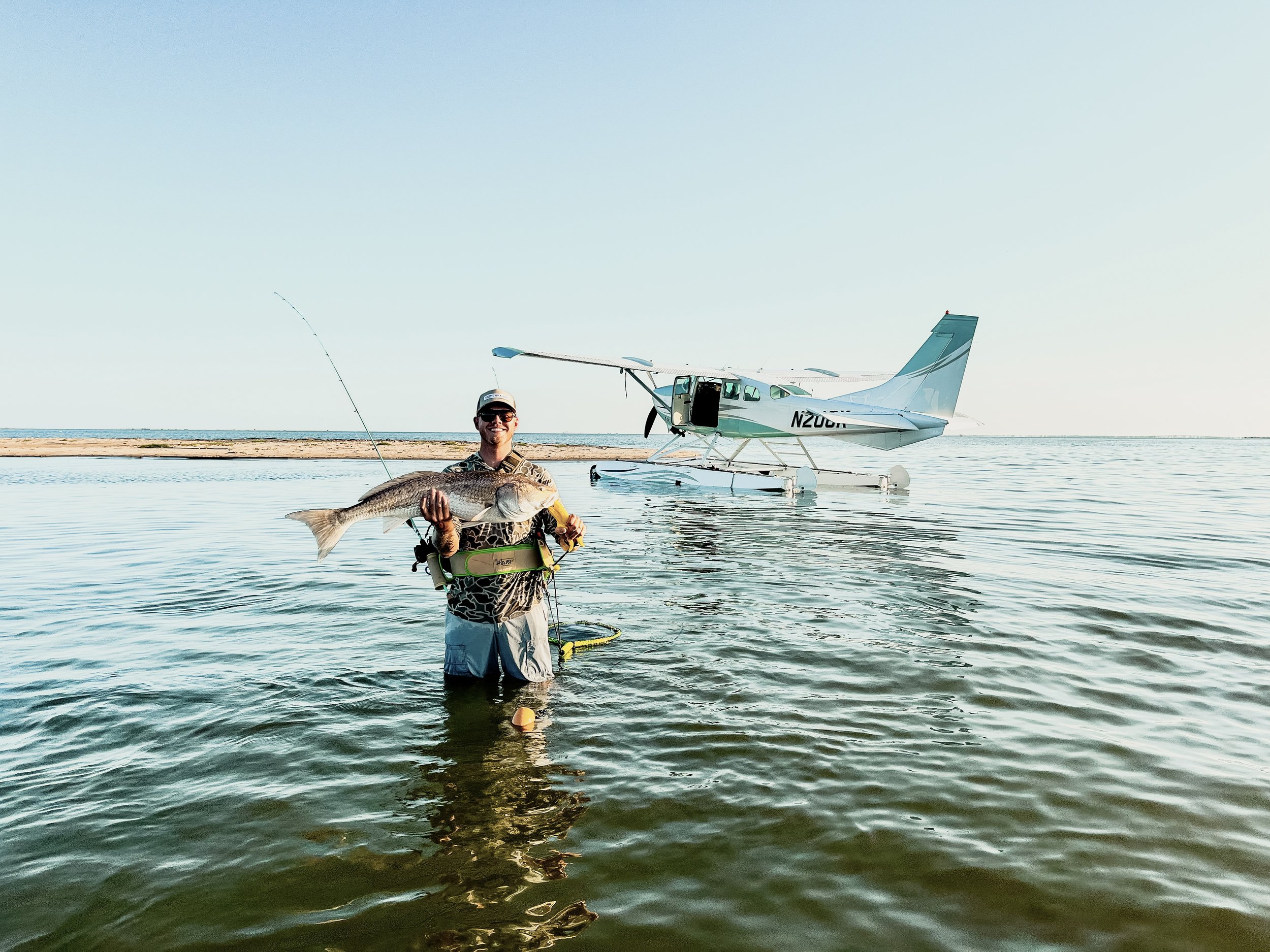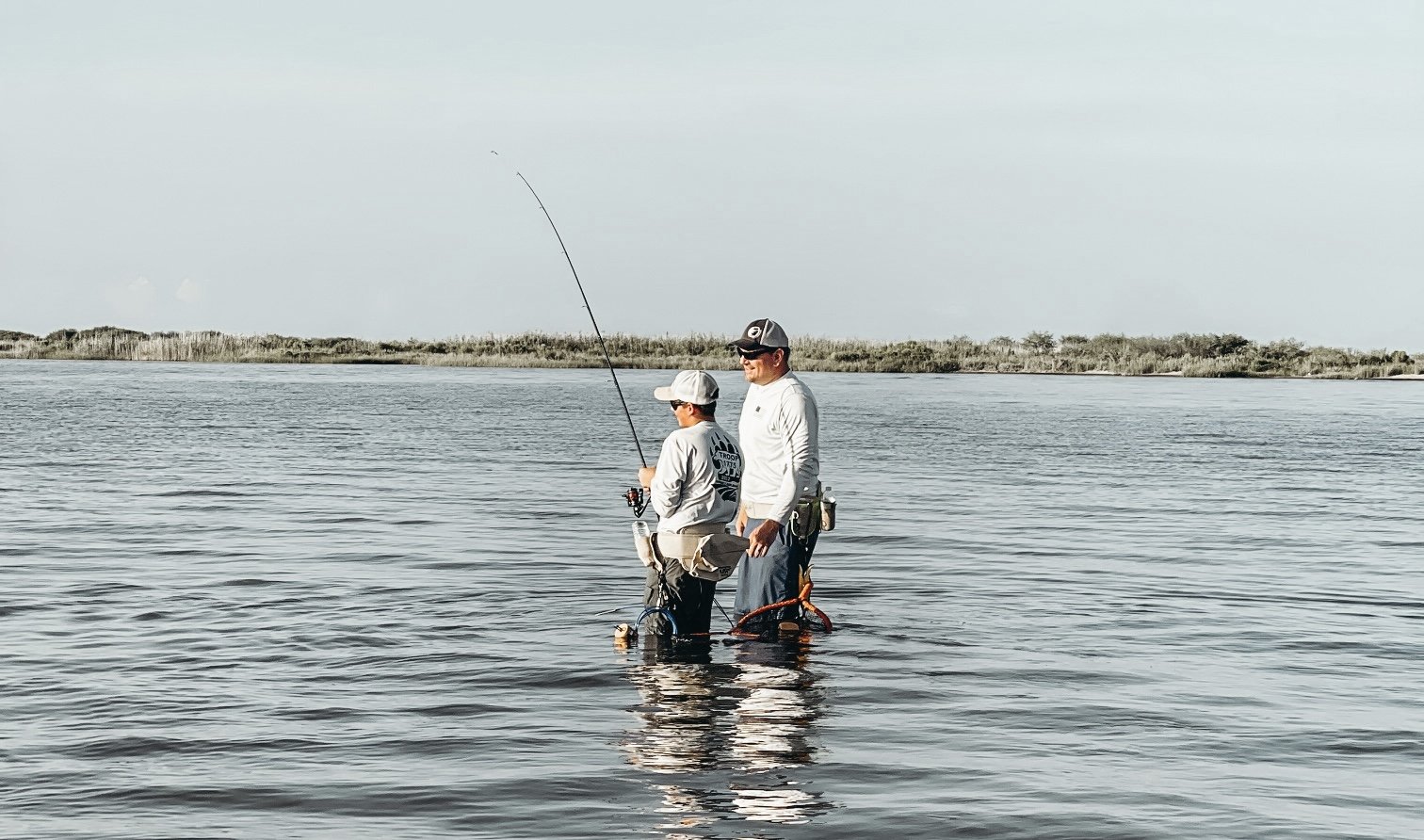Fly-In Fishing with Coastal Seaplanes
The sun is just beginning to rise over the Bay, laying a soft light across the grass flats. The tide is easing off, pulling away from the shallows and exposing seams where the fish will feed. We touch down gently, the floats brushing the surface until the plane settles into a slow drift. The engine winds down and silence takes its place.
The pilot steps from the cockpit into about three feet of water, wades forward, and sets the anchor. The smell of a trout slick carries on the damp morning air, sweet and unmistakable. From the open door, the view is surreal — a world of stillness and tension, of glassy water hiding sudden bursts of life. This is one of the most sought-after fishing grounds in the country, and for the moment, it’s reserved only for you.
The Flight
The day begins at the dock, where rods and tackle are stowed and the last straps tightened. You climb into the cabin, the smell of salt air a catalyst for the already palpable anticipation, and settle into a seat beside the window. The floats rock gently as the pilot casts off, slides into the cockpit and fires up the engine with practiced ease. As the plane taxis out onto open water, the pilot finishes his runup and closes the window. The throttle comes forward, and the nose rises, as the spray arcs away from the floats. The shoreline falls away, and the Bay opens wide beneath the wings. This… is living.
The Fight
Step into the shallows and the world sharpens. The water is often clear enough to see the grass sway beneath the current, other times a recent rain or storm has the clarity down. Either way, the fish are here. A wake pushes across the flat, a tail breaking the surface as a redfish feeds. The cast lands ahead of it. A quick strip and the line goes tight. The rod bends, the fish runs, and the quiet explodes into motion. This is the rythm of the morning.
Out here, the fight is close. It happens all around you, with nothing between you and the fish but air and opportunity.
What’s Provided
We keep it straightforward.
Wading belts
Rods and tackle
Local knowledge
What to Bring
Bring what makes you comfortable.
Food and drink
Footwear that holds up in water
Waders when the weather turns cold, from late September through May
Seasons on the Bay
The season opens in May, when the water warms and redfish begin to slide into the shallows. Through the summer, they tail across the grass flats and prowl the edges where bait gathers. Speckled trout feed along the same lines, holding near oyster bars, creek mouths, and drop-offs where the current carries shrimp and minnows.
By early fall, the reds start to school in larger numbers, their backs pushing wakes across the flats. The trout stay steady, striking hard on cooler mornings and feeding well into October. Each stretch of the season carries its own pattern, and the seaplane gives us the freedom to meet it head-on.
The Experience
Some days stay with you. The rush of the takeoff, the hush after the engine winds down, the first step into the water with the sun climbing over the flats. The Virginia Coast is a place of world-class fishing, but seen this way it becomes something more. Our aircraft take you into places that feel untouched, and the day writes its own story in the pages of your mind — By the end, what lingers isn’t the count of fish but the memory of being part of a place few ever touch.





